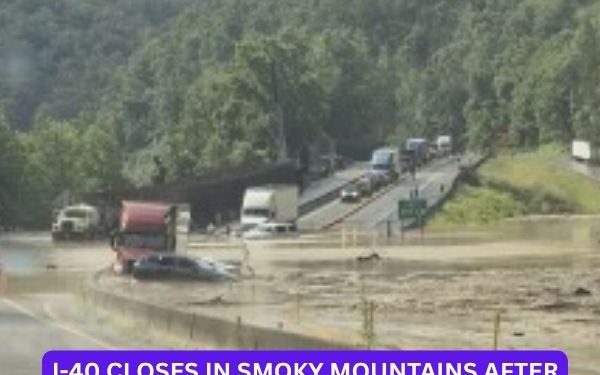Severe weather has forced the shutdown of a vital section of Interstate 40 in the Great Smoky Mountains, where flooding and rockslides caused heavy damage near the Tennessee-North Carolina border.
The incident happened Wednesday afternoon near mile marker 450 in eastern Tennessee, according to the Tennessee Department of Transportation (TDOT). Emergency crews have been working since then to clear debris and drain floodwaters, but there’s no estimate yet for when the highway will reopen.
Already a Troubled Stretch of Road
This 12-mile segment of I-40, which winds through the Pigeon River Gorge, has already suffered major setbacks. Just last September, Hurricane Helene brought severe flooding that washed out major portions of the roadway.
By March, only one narrow lane in each direction had been reopened after extensive stabilization efforts. The latest closure has now blocked even that limited access. Crews have had to remove curbs just to help trapped vehicles turn around.
Torrential Rain Hits Hard
The National Weather Service reported 2.5 to 3.5 inches of rain in just three hours, triggering landslides and overwhelming the already fragile road infrastructure.
Long-Term Fix Still Years Away
A full, lasting repair won’t happen anytime soon. Engineers plan a complex and costly solution: drilling steel rods into bedrock, injecting grout, and spraying the cliff face with concrete to reinforce the highway and prevent further collapses. But that fix could take years to complete.
Travel Nightmare for Drivers and Truckers
The I-40 corridor is a critical cross-country route, stretching from Wilmington, North Carolina, to Barstow, California. Detours around this Smoky Mountains section are long and difficult, often adding dozens of miles to a trip.
Commercial traffic is especially hard-hit. U.S. Highway 441, the scenic road through Great Smoky Mountains National Park, is closed to trucks, forcing many to navigate treacherous backroads or wait for the highway to reopen.
As cleanup continues, officials are urging drivers to avoid the area and monitor TDOT for updates. For now, patience is key — and detours are unavoidable.









